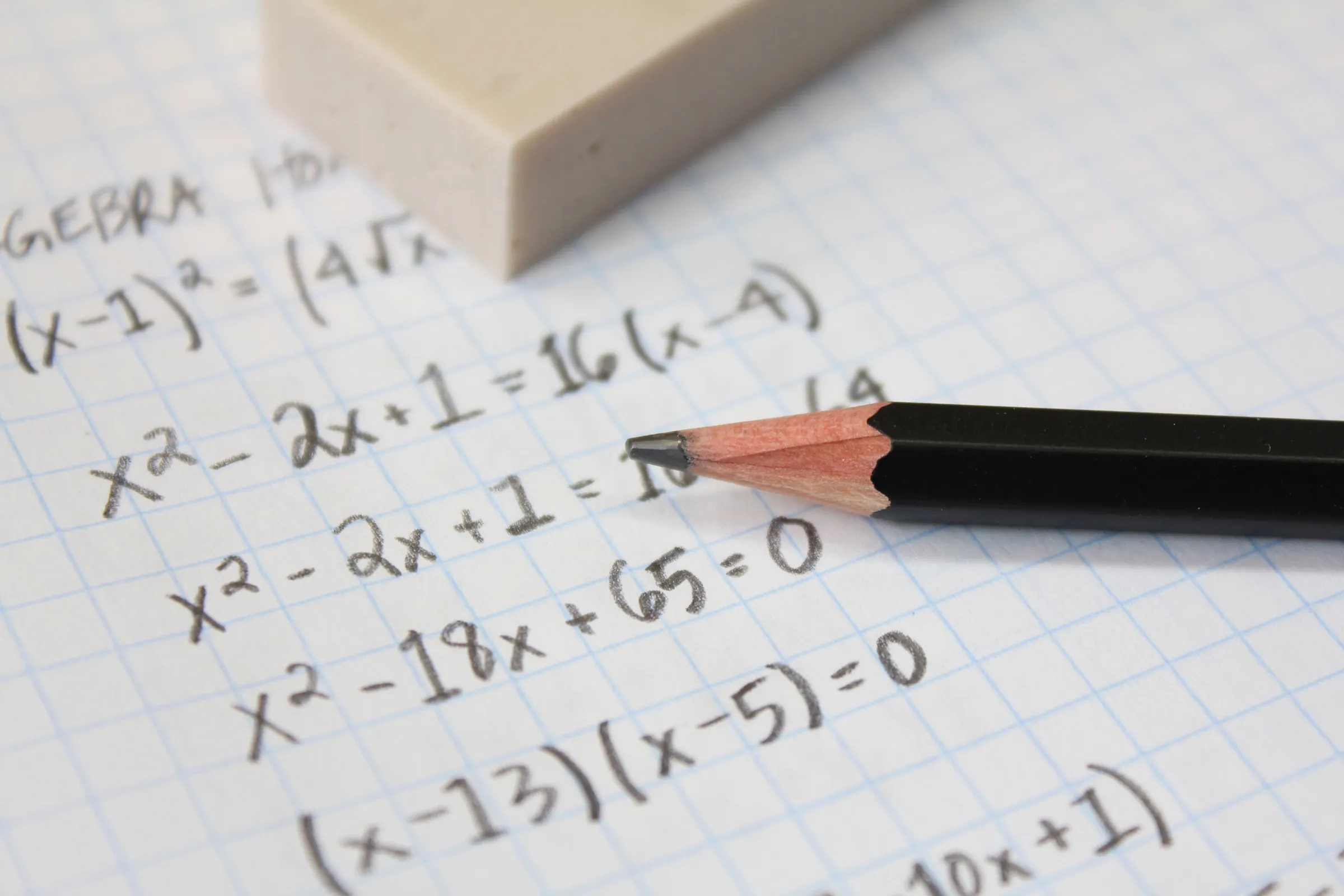GCSE Chemistry
Lesson duration: 60 minutes. If you need more than an hour you can always add more duration.
£15.00
What you’ll learn
Atomic Structure
Content Covered
- Atoms, Chemical equations, historical models of the atom, ions, and isotopes, separating mixtures.
- This is the first unit of GCSE Chemistry. It builds upon content learnt in Elements, Atoms and Compounds and Separation techniques in KS3.
- Student will learn the structure of the atom (Protons, Neutrons and Electrons), the history and development of the theory of the atom, showing how experimental data can be used to generate new theories (Rutherford’s gold foil experiment) as well as introducing the new terms of ions and isotopes. The idea of ions is key to a lot of GCSE Chemistry.
- Understanding the structure of the atom is key to GCSE Chemistry so it is the first unit taught to ensure that students have a firm understanding of atomic structure.
Skills to develop in this topic
- Separation techniques (in greater detail than KS3)
- Research into history of the atom
- Required Practical Chromatography
The Periodic Table
Content Covered
- Electronic structures, Group 1, and Group 7, Explaining trends, Transition Elements.
- Understanding electronic structure is important to GCSE Chemistry as it can help explain a lot of what is happening in reactions.
- Students need to know about the structure of the atom before they can calculate electron structure. It also means they can apply knowledge and calculate the charges on ions.
- By Looking at Group 1 and 7, they can explain the trends that they were aware of in KS3 by using their new knowledge of atomic structure and electron configuration.
- Transition elements are taught to students completing Triple Science and is an extension of the Group 1 and 7 contents. Students will learn about some of the ions that transition metals can form as well as the properties of these ions
Skills to develop in this topic
- Observing reactions and trends in group 1 and 7
Structure and Bonding
Content Covered
- States of matter, ionic bonding, covalent bonding, simple molecules, fullerenes and graphene, metallic bonding, nanoparticles
- This unit builds upon the particle unit in KS3 and helps explain changes of state by referring to intermolecular forces. Students then also learn about different types of bonding.
- To understand the different types of bonding students, need to be aware of electron configuration and the formation and charges of ions so need to have completed Atomic Structure and The Periodic Table before they can access this content.
Skills to develop in this topic
- Changes of state, observing properties of ionic, covalent, and metallic compounds.
The Earth’s Atmosphere
Content Covered
- This unit comes at the end of the specification; however, it is introduced in year 9 as it links to a similar unit that student’s study in Geography at the same time which opens the possibility if interdepartmental events.
- Students have also covered this in KS3 science and geography so provides a good opportunity for retrieval.
Skills to develop in this topic
- Climate change, global warming, greenhouse effect
Chemical Calculations
Content Covered
- Relative mass and moles, reacting mass calculations, concentration, yield, atom economy, titrations.
- This unit is potentially one of the trickiest in GCSE Chemistry/Combined Science due to abstract concepts and multi-step calculations required.
- This unit builds upon content learnt in Atomic Structure and reactions.
- It also enables students to build upon their understanding of Conservation of Mass through mathematical proof. While there is an argument for teaching this unit later in the course, by introducing it early it provides many opportunities for the practice of the skills and knowledge learnt.
Skills to develop in this topic
- Conservation of mass experiments, titrations
- Required practical: Neutralisation
Chemical Calculations (Combined)
Content Covered
- Relative mass and moles, reacting mass calculations, concentration, yield, atom economy, titrations.
- This unit is potentially one of the trickiest in GCSE Chemistry/Combined Science due to abstract concepts and multi-step calculations required.
- This unit builds upon content learnt in Atomic Structure and reactions. It also enables students to build upon their understanding of Conservation of Mass through mathematical proof. While there is an argument for teaching this unit later in the course, by introducing it early it provides many opportunities for the practice of the skills and knowledge learnt.
Skills to develop in this topic
- Conservation of mass experiments, titrations
Chemical Changes
Content Covered
- In this unit students will study more about the reactivity series which is touched upon in The Periodic table. Explanations of the reactivity series will provide opportunity for students to recall knowledge from Year 9 content (Atomic structure and the periodic table). Students have also studied displacement reactions in KS3 (Metals and acids) as well as the process of making salts and neutralisation (acids and alkalis). This unit also prepares students for the Acids, Alkalis, and pH unit in KS5 through the idea of acids containing H+ ions and alkalis containing OH- ions and linking the concentration of ions to the strength of the acid/alkali.
- There are also many opportunities for students to practice skills learnt in Chemical Calculations, ensuring that students can access a range of questions.
- Students are introduced to reduction and oxidation reactions and, half equations.
Skills to develop in this topic
- Required practical: Neutralisation
Electrolysis
Content Covered
- This unit builds on concepts of separating compounds in the chemical changes unit, with some metals not being able to be extracted by displacement but need to be extracted by electrolysis.
- The theory of electrolysis is taught initially with students recalling knowledge from Atomic Structure and, Structure and Bonding to explain why only ionic compounds can be electrolysed. · Half equations are again used in this unit.
- Students then look at the extraction of aluminium using electrolysis where the theory in the first half of the unit is put into practice.
- Students can then also link the effect of aluminium extraction on the environment (The Earth’s Atmosphere). Chemical Changes and Electrolysis units are very intricately linked and although they have been separated into two distinct topics could be taught as one topic.
Skills to develop in this topic
- Required practical: Electrolysis
Energy Changes
Content Covered
- Exothermic and endothermic reactions, reaction profiles, bond energy calculations, fuel cells
- The overarching theme in this unit is that energy is conserved in chemical reactions. Students have met the law of conservation of energy in KS3 and in GCSE Physics energy unit. It is taught after displacement reactions as it brings in a new concept to reactions in that they can either be endothermic or exothermic.
- Students need to have learnt about the different types of bonding and how reactions occur before they can complete this unit.
- Fuel cells incorporate both content covered in this unit (reactions) and in the previous two units (half equations).
Skills to develop in this topic
- Required practical: Temperature changes
Crude oil and Fuels
Content Covered
- Hydrocarbons, fractional distillation, burning fuels, meeting fuel demands.
- This is the first unit of organic chemistry that the students will study. For combined students they will only learn about Crude oil and fuels, students taking triple science will also cover organic reactions and polymers which follow on from this uni.
- Students will be able to piece together content from lots of previous units (separation techniques in KS3 and 4, Combustion in KS3, fuel demands – physics KS4) as well as learning there are different types of hydrocarbons.
Skills to develop in this topic
- Fractional distillation (revisit from first unit at GCSE) Combustion
Organic Reactions
Content Covered
- Reactions of alkenes, carboxylic acids, alcohols, esters
- This unit is triple only and follows on from the Crude Oil and Fuels unit.
- Students will learn how different organic chemicals can react and some of their uses. While it is taught as a separate unit from Crude oil and fuels, there is a large amount of similar content.
Skills to develop in this topic
- Testing for the presence of alkenes with bromine water – observation skills, importance of clear answers within questions
Polymers
Content Covered
- Addition polymers, condensation polymers, DNA
- This unit is triple only and follows on from the Crude Oil and fuels Unit as well as the Organic Reactions unit
Skills to develop in this topic
- Uses of polymers, manufacturing processes
Rates and Equilibrium
Content Covered
- Factors affecting rate, reversible reactions, equilibrium.
- This is the first unit taught in year 11. It provides good opportunity for retrieval work on various parts of the Science/Chemistry GCSE as well as content covered at KS3 (particle model, catalysts, collisions, activation energy)
- Students also learn about equilibrium in this unit which is a tricky concept to understand. For combined students they can be introduced to the Haber process and the history that goes with it.
Skills to develop in this topic
- Required Practical: Rates of reaction Can be done with increase concentration, temp, catalyst
Chemical Analysis
Content Covered
- Analysing chromatograms, pure substances, testing for gases, testing for ions, instrumental analysis
- Ideally students will have been able to cover an amount of chemical analysis through practical work.
- This unit is taught towards the end of the course as it gives students the opportunity to recall the products of various reactions and then determine how scientists can test for them.
- Students will be taught how to test for various substances during practical work and then be able to understand it in more detail once they have a better understanding of chemistry.
Skills to develop in this topic
- Required Practical: Identifying ions
The Earth’s Resources
Content Covered
- This is the final unit for Combined Science and discusses the difference between finite and renewable resources, water treatments, extracting metals and life cycle assessments.
- Finite vs renewable resources, water treatment, extracting metals, life cycle assessments, recycling.
Skills to develop in this topic
- Required Practical: Water Purifications
Using Our resources
Content Covered
- Rusting, alloys, polymers, ceramics, composites, making ammonia, fertilisers.
- This is the final unit for Triple Science (Chemistry) and brings together a lot of content that they have learnt throughout their GCSE and provides applications of the science, e.g., rusting, making alloys, the use of polymers, ceramics, and composites. The process of making ammonia and fertilisers leading to a potential cure for world-wide hunger along with the development of chemical warfare and Zyklon B.
Skills to develop in this topic
- Rusting comparisons, uses of polymers, alloys, ceramics, composites, ammonia.
- Making ceramics – link to art
This course includes:
- 9.5 hours on-demand video
- 95 downloadable resources
- Access on mobile and TV
- Certificate of completion



